What is the Science of Reading?
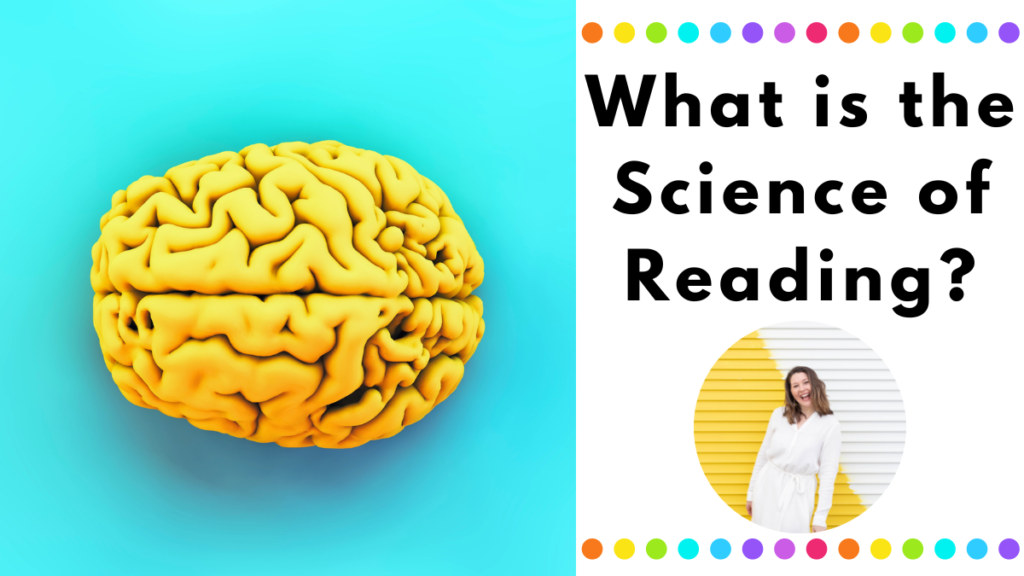
The Science of Reading is a term I first started to hear during the pandemic (even having spent the past decade of my educational career as a reading interventionist and literacy coach). If you’re in education, chances are you’ve heard the buzz around SoR, too.
However, is the Science of Reading just a “buzz term” or trend? Is it new? Is it just another pendulum swing in the Reading Wars?
Spoiler alert: the short answer is no.
So, what is the Science of Reading, exactly?
Simply put, the Science of Reading refers to a vast body of research about how we learn to read. It is not a philosophy, a curriculum, or a program. However, this body of research has important implications for how we should teach reading.
Is the Science of Reading new?
Decades of comprehensive research and information from developmental & educational psychology, cognitive science & neuroscience, and even linguistics contribute to our understanding of how the brain learns to read and also what’s essential for reading proficiency. This research includes thousands of studies across the globe, conducted in multiple languages.
Yes, I said decades of research.
(If you haven’t already, I recommend listening to Emily Hanford’s podcast series: Sold a Story. Episode 3 is especially powerful, referring to “The Battle” and politics between a structured approach vs. a whole language approach from over 30 years ago. The science and research on how we learn how to read was CLEAR even back in the 1990s. In fact, the science and research predates that time, as it’s been conducted over the past 5 decades! However, it was not popular.)
Reading is NOT a Natural Process
Speaking is a natural process. As babies listen to the speech they’re most immersed in, they begin to mimic the mouth movements they see and the sounds they hear. Suddenly, the sounds become words: “mmm” becomes “mama”. Then, the words become phrases and the phrases turn into sentences. Before you know it, a language explosion occurs, leading toddlers to having full fledged conversations. This natural process occurs simply by surrounding children with language and speaking to/with them.
Some people have taken this process, and tried to adapt it to reading (i.e. Whole Language). They believe that if you just immerse children in a plethora of beautiful books within a print-rich environment, children will just “pick up” on reading. Now, there are a small number of children (we’re speaking minority, here), for which this does work.
However, if reading occurred naturally, the role of a reading teacher would not be necessary and teaching reading would be irrelevant.
Our brains have not evolved to the point in which reading just occurs naturally in the same manner as learning to speak. Our brains can innately speak, but reading is a man-made invention.
So, how DOES the brain learn to read?
Cognitive science tells us that there isn’t just one part of the brain responsible for reading. Actually, brain scans show us that there are many parts working together simultaneously in order to not only lift words off the page, but to also understand what they mean.
We know that the brain is split into right and left hemispheres, right? I feel growing up, I always learned the left side is more logical and the right side is more creative. (…and I had always felt right-brain dominant with my artistic side!)
The left side of your brain handles calculations (that logical math aspect we commonly think of), but it also handles reading and writing. The right side of the brain is more visual and processes images more than words.
On the left side of our brain, there are two processors that are present at birth. The phonological processor and the orthographic processor.
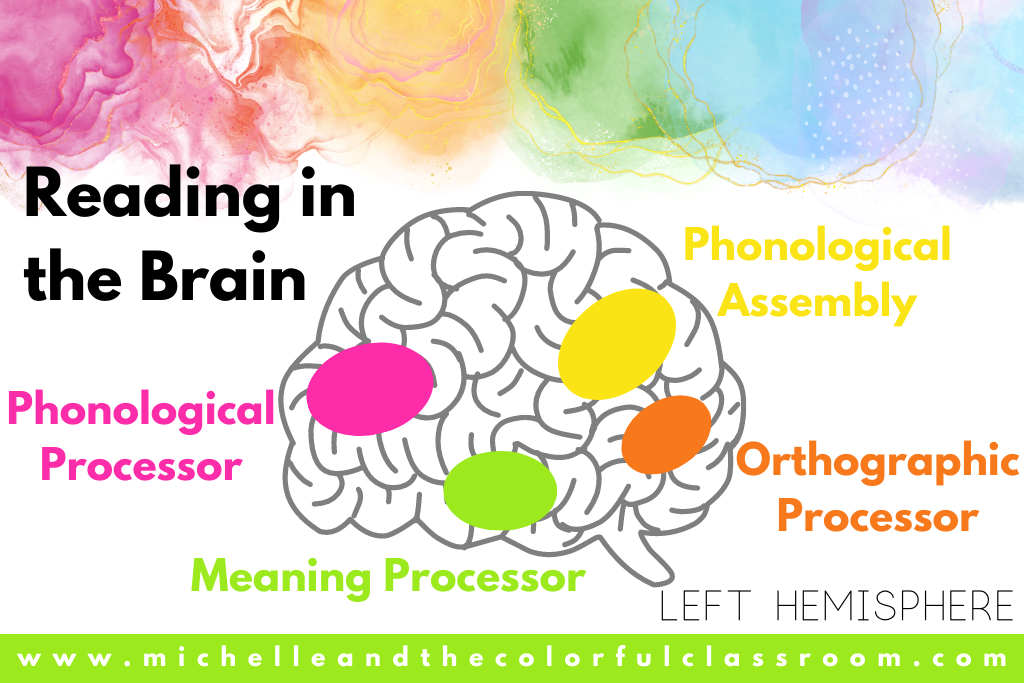
The Phonological Processor is identifying, producing, and even manipulating the speech sounds in our language. The Orthographic Processor is receiving visual input from printed words. Visual input is not a picture of the word’s shape, but the letter strings making up that word.
There’s another area in our brain that develops (or hopefully develops over time) called the Phonological Assembly. When we teach systematic and explicit phonics, the Phonological Assembly region becomes a bridge between the Phonological Processor and Orthographic Processor, connecting the two (and also adding meaning), so that ultimately, students can link words with the correct spelling and along with the meaning.
For example, if you were to read the word “cat”, see the spelling “c-a-t”, and break it into the sounds /c/-/a/-/t/, we know the word is pronounced “cat”. As we attach meaning, you’d also know it’s a type of animal: a feline.
Again, all of these parts of the brain are working together – and quickly!
This is simply a cliff notes version, but if you want to dig deeper into the brain science, the books “Reading in the Brain” (Stanislas Dehaene) and “Overcoming Dyslexia” (Sally Shaywitz) are great resources!
Dyslexia and the Brain
Efficient reading happens on the left side of our brains, right?
Well, brain scans show us that someone with dyslexia or someone who struggles with reading is actually relying moreso on the right hemisphere for reading. Remember, that right hemisphere is processing images more than words?
This directly correlates with a Whole Language approach to memorizing words as whole units, as a picture. While it’s possible, it’s not efficient. Eventually, this compensation method will not become more laborious as books have less picture support and more multisyllabic words.
The Science of Reading: Two Models
There are two models that are consistently used when referencing the Science of Reading: the Simple View of Reading and Scarborough’s Reading Rope. Let’s quickly dive into each.
The Simple View of Reading
The Simple View of Reading, a theory proposed by Gough and Tunmer (1986), is a simple math equation. It tells us that:
Decoding x Language Comprehension = Reading Comprehension
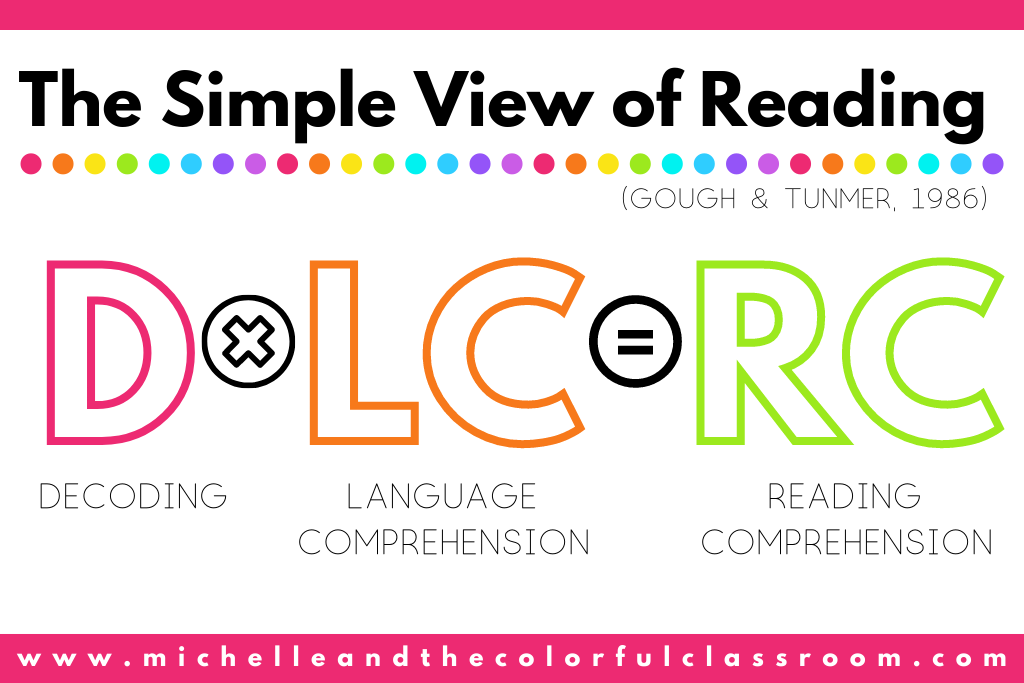
Notice this a multiplication problem, not an addition problem.
Even if you’re not good at math, let me remind you that anything multiplied by zero equals zero.
Zero decoding skills, but excellent language comprehension? The product of reading comprehension will be zero.
The opposite is also true. Sometimes we have students who have cracked the code and can read every word on a page. However, if they cannot understand what was read, reading comprehension will also not be present.
I’m also reminded of students who are poor at decoding, but demonstrate incredible comprehension during a read aloud. Language comprehension is at work, promoting deep reading comprehension, because someone else provided the scaffold of decoding the text.
Scarborough’s Reading Rope
Is the Simple View really just that simple though?
Literacy researcher and psychologist, Dr. Hollis Scarborough, expanded on this idea, by breaking Word Recognition (Decoding) and Language Comprehension down even further into smaller strands.
When the Word Recognition strands are increasingly automatic, and the language comprehension strands are increasingly strategic, these strands weave together tightly to demonstrate skilled reading.
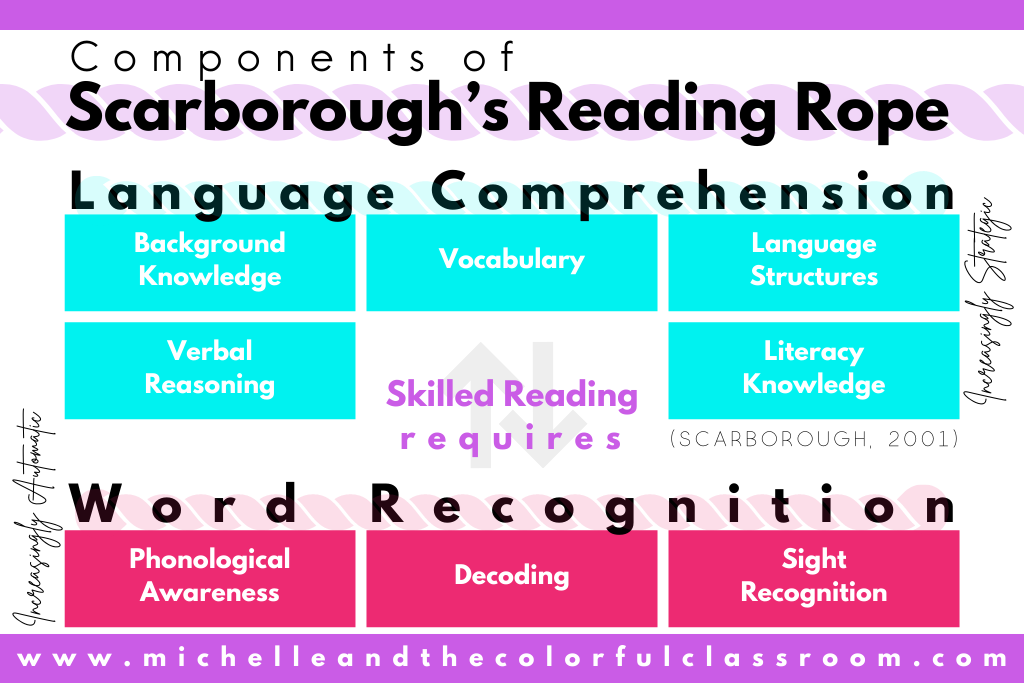
Really Great Reading actually has a really beautiful model of Scarborough’s Reading Rope, incorporating the Simple View of Reading. Click here to see!
Is the Science of Reading just another pendulum swing?
We all know that over the years, reading instruction has been prone to pendulum swings and heated debate within the “Reading Wars”. When considering the vast body of research called the Science of Reading, it’s not a matter of swinging between views anymore. The MOST effective and efficient reading instruction is not up for opinion or philosophies. Understanding how the brain actually acquires the ability to read cannot be debated.
One thing I DO think is critical in this conversation is to understand that the Science of Reading is not just about phonics instruction. It encompasses all 5 Pillars of Literacy. I do believe explicit, systematic phonics instruction has been a missing piece in many of our schools (hence the heavy phonics emphasis we see when it comes to the Science of Reading). However, educators need to remember, it’s not just about being phonics-centric; it’s critical to be mindful of language comprehension, too!
Remember that “Simple View”!
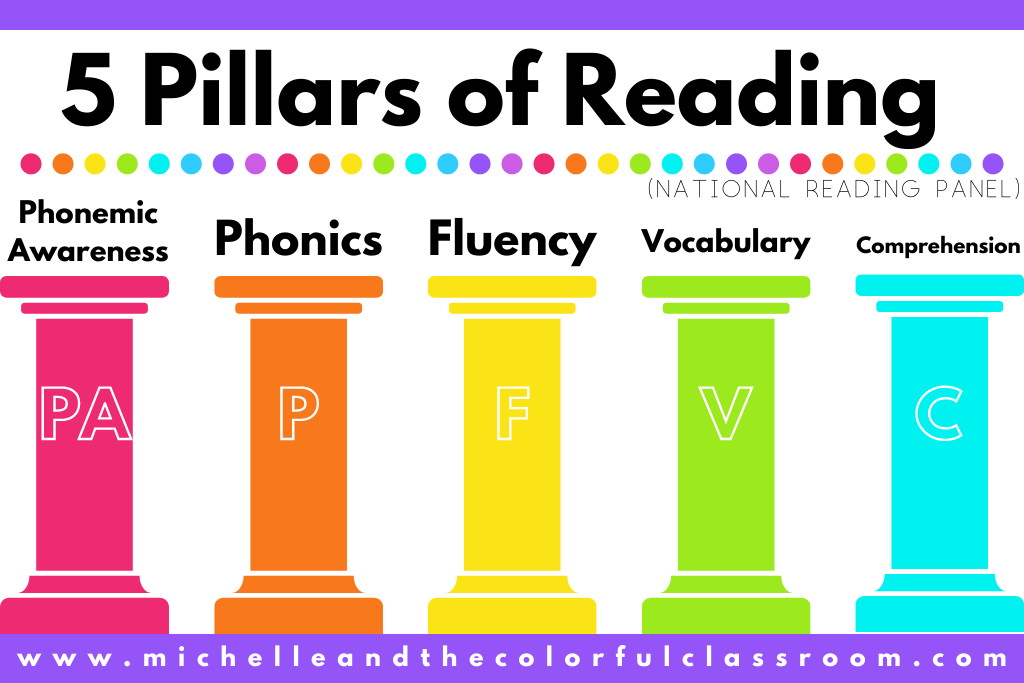
Final Thoughts
I hope you found this post helpful. Just like we want to help build background knowledge for our students, it’s important for teachers to feel equipped with KNOWLEDGE about the Science of Reading!
If you’re new to the SOR community, be sure to download my FREE guide: Phonics Terms Every Teacher Needs to Know – which can help break down common terminology used when it comes to word recognition (just one factor in that “Simple View”)!
